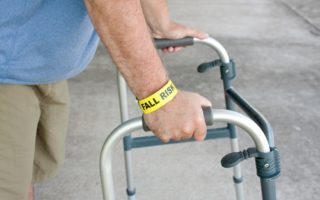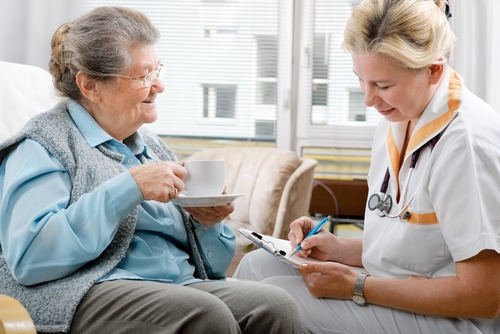
Falls should be a serious concern for long-term care providers. According to the Centers for Disease Control and Prevention, at least one out of every four people 65 and older fall each year. Once older adults fall, their chances for falling again doubles. Additionally, one out of every five falls results in a serious injury, and 2.8 million older people are treated for fall-related injuries in the emergency room annually.
More than 95 percent of hip fractures are the result of a fall. They are also the most common cause for traumatic brain injuries among older adults. Sadly, 20 percent of all deaths over the age of 65 are attributed to fall-related injuries. Analysts estimate fall injury costs to be around $31 billion a year with hospital bills accounting for two-thirds of the total.
What causes falls among older residents?
There are numerous conditions and risk factors that contribute to falls. Most commonly, these include: vision impairments, lower body weakness, vitamin D deficiency, use of medications, environmental hazards and foot pain. However, while older adults fall with greater frequency than younger adults, the National Council on Aging explained that falling is not an inevitable symptom of aging.
"Falls are not a natural progression of aging."
The NCOA indicated that long-term care facilities can make practical lifestyle adjustments, form clinical community partnerships and implement evidence-based falls prevention programs and techniques to substantially reduce the number of elder falls every year. If you are a long-term care provider hoping to lower your facility's fall rate, here are three prevention best practices:
1. Dispel common myths about older adults and falls
To keep your residents safe from harm, you first need to debunk commonly circulated myths about older adults and falls. These range from inaccurate information about medication side effects to the belief that not everyone is at risk for a fall. Get started talking to your residents today and uncover these three myths:
- Myth 1: Residents will avoid a fall if they cut down on their physical activity. A common myth is that if residents stay in their rooms and limit their activity, they won't fall. However, research shows that regular physical activity will actually keep older adults more mobile and build up their strength. Meanwhile, social interaction can also be beneficial for your residents well-being and state of mind.
- Myth 2: Canes and walkers are a sign of weakness. If your residents want to maintain or improve their mobility, they should consult their physical therapist to get fitted for a walker or cane. This way, the professional can instruct residents how to use them safely. These devices are not a symbol of weakness, rather they are a sign that your residents will not let their physical impairments keep them from being independent.
- Myth 3: I cannot talk to my residents if I am concerned about their risk for falling. You might think this conversation will hurt their feelings or that it is none of your business, but this mindset is incorrect. If you want to keep them safe, you must offer them support in the form of an honest conversation about their health and independence. You may find that they're just as worried as you are, but were unsure about how to bring up the subject. This talk can lead to you implementing a fall prevention program, setting up vision exams and more.
2. Offer preventative health care services
As mentioned previously, some of the leading health factors that result in falls include medication symptoms, poor vision and muscle weakness. Instead of treating falls after they occur, consider a more proactive approach to care. Offer preventative health care services, such as eye checkups and physical therapy appointments, for residents who may be in need.
Also, encourage residents to speak with their primary care physician if they are experiencing any negative side effects from their medication.
3. Conduct walkthrough safety assessments of residents' living spaces
Uneven walking surfaces, loose rugs, clutter or slippery surfaces are all probable conditions for falls. You should conduct periodic safety assessments and checkups to make sure your residents are not at risk for falls in their own living spaces. Key areas you want to inspect are bathrooms, lighting, flooring and furniture. For example, uneven or bad lighting could lead to resident falls in the middle of the night, while poorly installed shower/bathtub/toilet bars could also lead to harmful falls and fall-related injuries.
To learn more about fall prevention strategies, take Mariposa Training's course "Fall Prevention – Top 10 Tips for Reducing Fall Related Injuries," or download our Fall Prevention white paper today!




